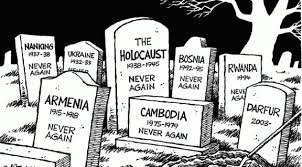Rachel Adams, Columbia University On July 26, 2016 a man wielding a knife broke into Tsukui Yamayuriena, a home for the disabled outside of Tokyo and brutally murdered 19 people as they slept, while injuring another 26. Afterwards, he turned himself in to a local police station, with the explanation: “It is better that the disabled disappear.” Disability advocates have expressed dismay that the massacre – Japan’s deadliest mass killing since World War II – has received so little attention relative to mass killings in Paris, Nice, Orlando, Kabul and Baghdad. Australian disability activist Carly Findlay wrote, “There was no …
How to Prevent the Winter Slide
By Frank Milner As students get set to embark on their coveted winter break plans, parents should be prepping on how to combat the dreaded “winter slide” that can impact their very own kids. Days and even weeks out, students can begin to “coast” and quickly lose momentum in school. Despite the fact that it’s not as long as the three-month break that kids typically refer to as the “summer slide,” the two to four weeks that students go without any educational activity can truly be detrimental to their long-term academic success, including core subjects such as math and science. …
The HBCU Advantage, Part II: Or How to Win When the Competition is Tough
HBCUs came into existence in vastly different times, when they were necessary for black students to attend college. Today, they have to be savvy if they want to stick around. Let’s take a look at the shift HBCUs are making to become prominent in today’s integrated culture. There are many different business models out there, but in general, some serve the mass market and some appeal to niches. When it comes to today’s colleges, it’s easy to see PWIs (or predominantly white institutions) as “mass market” and HBCUs as “niche” schools. HBCUs have also had long histories, were created to …
Continue reading “The HBCU Advantage, Part II: Or How to Win When the Competition is Tough”
Have You Hacked These Cognitive Tools?
Modern technology offers a plethora of cognitive tools for implementation in your classroom. You’re likely familiar with pedagogical tools and teaching resources, but you may also be wondering what exactly a “cognitive tool” is. Cognitive tools are tools that, when used outside of the classroom, play a role in productivity. They include word-processing programs, spreadsheets, and e-mail programs. Applied to the classroom, these become cognitive tools, because they improve the learning process, enhancing thinking and understanding. Let’s look at some examples: Spreadsheets Spreadsheets are screens that are divided into rows and columns, and are supplied in programs that have mathematical …
Three Handy Rubrics for Assessment Creation
When it comes to creating classroom assessments, educators have a lot of leeway as to form, content, and length. Sometimes, the breadth available can be a little overwhelming. If you’re stalling when it comes time to draw up evaluations for your students – don’t fear! We’ve got a set of handy guides to help you get your assessment-brain inspired! Rubric 1 – Seven Forms of Assessment: 1. Forced Choice Multiple choice, matching, true/false, fill-in-the-blank Can be scored objectively Most common form of assessment Choose from among alternatives given 2. Essay Good for assessing thinking, reasoning, and expression skills Opportunity to …
Continue reading “Three Handy Rubrics for Assessment Creation”
Understanding Three Key Classroom Management Theories
By Tricia Hussung How teachers manage their classrooms is an important part of achieving an effective learning environment. Educators know that all students learn differently, and choosing the right instructional style can mitigate behavioral issues and make good instruction possible. According to the National Comprehensive Center for Teacher Quality, a significant body of research also demonstrates that classroom organization and the ability to effectively manage student behavior “significantly influence the persistence of new teachers in teaching careers.” Within this context, it is clear that instructional theory and classroom management strategies are among the most important aspects of teacher education. While …
Continue reading “Understanding Three Key Classroom Management Theories”
Public vs. Private: What Education Is Right for Your Kids?
**The Edvocate is pleased to publish guest posts as way to fuel important conversations surrounding P-20 education in America. The opinions contained within guest posts are those of the authors and do not necessarily reflect the official opinion of The Edvocate or Dr. Matthew Lynch.** A guest post by Anica Oaks While there is a current push toward private education in many circles in today’s society, the reality is that there are many happy, well-rounded, and well-educated children from both private and public institutions. It really does come down to choosing what’s best for your child. However, that choice isn’t …
Continue reading “Public vs. Private: What Education Is Right for Your Kids?”
Ask Dr. Lynch: Teaching Students About Genocide
Question: How should the topic of ‘genocide’ be taught in schools? Answer: Before I respond, I would like to thank you for your question. Nowadays, we are seeing the topic of genocide being covered even in the elementary grades and there is no consensus on when it should be introduced or taught. However, I will give you my expert advice, which takes all of the dominant schools of thought into consideration. In my opinion, the topic of genocide should not be discussed prior to grade six, because although younger students have the ability to empathize with the victims of genocide, …
Continue reading “Ask Dr. Lynch: Teaching Students About Genocide”
The Five Major Features of Summative Assessments
Creating a classroom assessment that best quantifies your students’ learning can be tricky business. Because of their broad scope but specific content focus, summative assessments can be a powerful tool to quantify student learning. However, in order for a summative assessment to be most effective, five aspects must be in play: authenticity, reliability, volume, validity, and variety. Here’s how each fits into the summative assessment equation: 1. Authenticity A test should examine real-world applications. For example, a math test with equations alone is less effective than one with story problems or ways to associate the skill outside of the testing …
Continue reading “The Five Major Features of Summative Assessments”
10 Ways to Incorporate Music into Your Classroom
A teacher librarian shares her best practices for tuneful teaching By Shannon McClintock Miller “Music gives a soul to the universe, wings to the mind, flight to the imagination and life to everything.” ~Plato One of the most important gifts we can give to our young children is a healthy foundation for lifelong learning. We want to capture their excitement, bottle their enthusiasm, and give life to their imagination. As educators, we look for resources that support and enhance these magical learning experiences. As shown in the Learning With Music infographic above, music stimulates and connects the different areas of …
Continue reading “10 Ways to Incorporate Music into Your Classroom”









